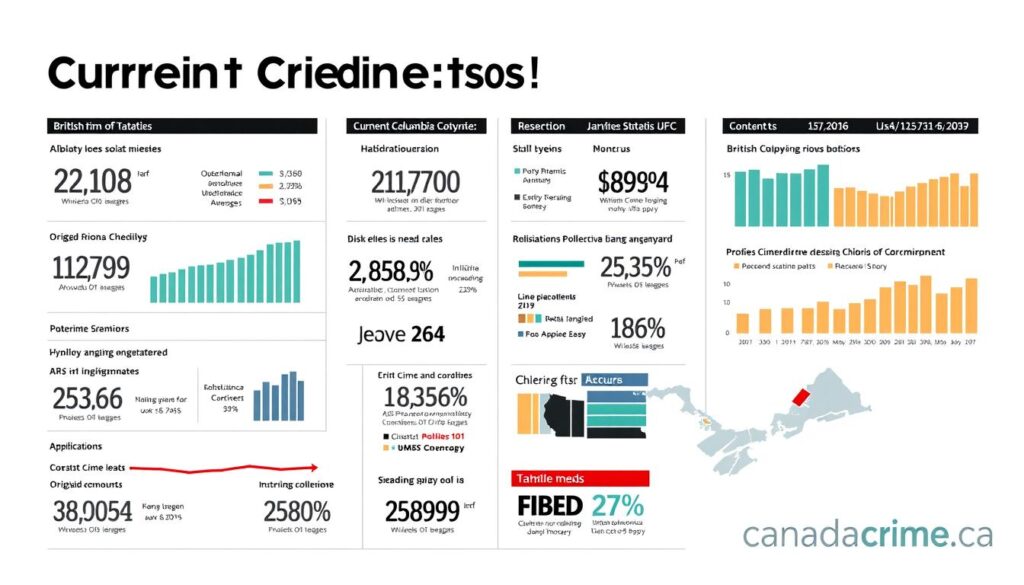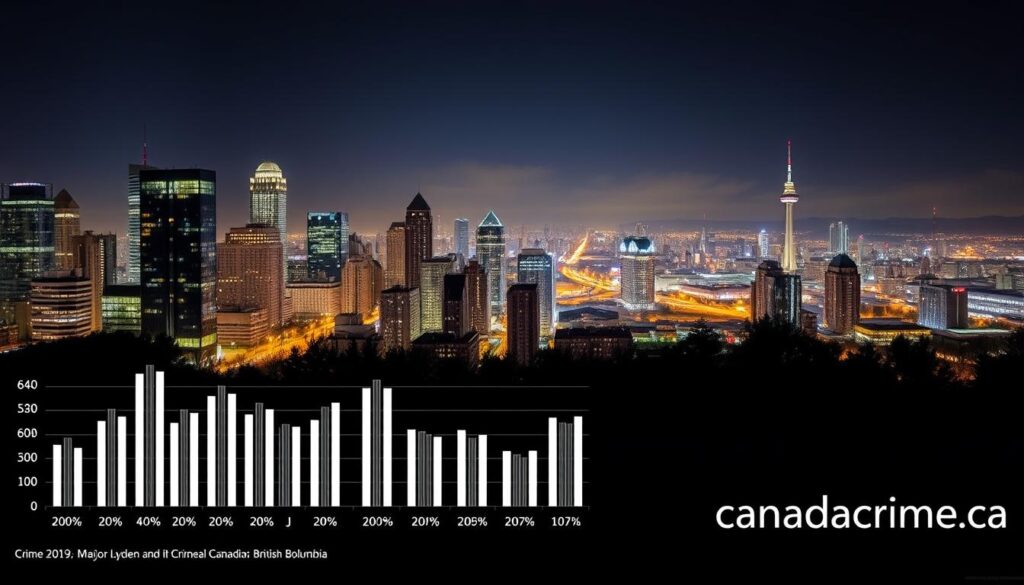British Columbia has recently been at the center of national attention due to its crime statistics, with five of its cities ranking among the top 10 in Canada for the highest crime rates in cities with populations exceeding 100,000.
The provincial crime rate stands at 7,404 incidents per 100,000 people, a figure that serves as a baseline for understanding the comparative safety of individual cities within the province.
Experts emphasize that understanding crime rates requires a familiarity with how statistics are collected and interpreted by law enforcement agencies and Statistics Canada.
By examining current crime trends and the methodologies behind crime data collection, this overview aims to provide an objective view of safety in BC, acknowledging the complex factors that influence criminal activity.
Current Crime Rate in BC: A Provincial Overview
Understanding the current crime rate in BC involves analyzing various crime statistics and indices. British Columbia’s crime landscape is a complex issue that requires a comprehensive examination of different metrics.
The province recorded a Crime Severity Index (CSI) of 104.1 in the most recent reporting period, which is above the national average. This highlights the ongoing challenges in addressing criminal activity across BC.
BC’s Position in National Crime Rankings
According to Statistics Canada, BC’s provincial crime rate stands at 7,404 incidents per 100,000 people. This metric is crucial for understanding the volume of criminal activity relative to the population size.
To contextualize BC’s crime rate nationally, it’s essential to compare it with other provinces. The crime rate and CSI are two key metrics used for this comparison.
Crime Severity Index vs. Conventional Crime Rate
The Crime Severity Index (CSI) and the conventional crime rate are two complementary measures used to assess police-reported crime. While the crime rate measures the volume of crime per 100,000 population, the CSI measures both the volume and severity of crime.
| Metric | Description | BC Value |
|---|---|---|
| Crime Rate | Volume of crime per 100,000 population | 7,404 |
| Crime Severity Index (CSI) | Measures both volume and severity of crime | 104.1 |

Understanding the distinction between these metrics is vital for accurately interpreting crime statistics and avoiding misleading comparisons between jurisdictions.
Top BC Cities with Highest Crime Rates
Recent data from Statistics Canada highlights that BC is home to multiple cities with high crime rates, sparking concerns about public safety. The crime severity index (CSI) is a crucial metric that helps understand the extent of criminal activity in these areas.
Kamloops: Canada’s Highest CSI City
Kamloops stands out with the highest Crime Severity Index (CSI) among Canadian cities with a population over 100,000, recording a CSI of 165.3 in 2023. This represents a significant crime rate, with 13,116 criminal incidents reported per 100,000 residents.
Chilliwack, Nanaimo, and Other High-Ranking BC Cities
Other BC cities like Chilliwack, Nanaimo, Kelowna, and Abbotsford-Mission also feature prominently in national crime statistics. Chilliwack had the second-highest CSI at 156.2, with a 17% increase in its crime rate from 2022. Nanaimo and Kelowna ranked sixth and seventh, respectively, indicating a concerning trend across the province.
- Kamloops had a CSI of 165.3 in 2023, with 13,116 criminal incidents per 100,000 residents.
- Chilliwack ranked second with a CSI of 156.2 and a 17% increase in crime rate from 2022.
- Nanaimo, Kelowna, and Abbotsford-Mission also ranked high in national crime statistics.

Factors Contributing to High Crime Rates
Various socioeconomic factors contribute to these high crime rates, including housing affordability issues, substance abuse, mental health service gaps, and demographic considerations. Cities experiencing rapid population growth, like Kamloops and Chilliwack, face challenges in scaling public safety resources.
How Crime Statistics Are Collected and Reported
The collection and reporting of crime statistics in BC involve a complex process that relies on multiple data sources. Understanding this process is crucial for interpreting crime rates and trends within the province.
Crime Data Sources in British Columbia
Crime statistics in British Columbia are primarily sourced from two key Statistics Canada databases: Table 35-10-0184-01 for incident-based crime statistics by detailed violations, and Table 35-10-0063-01 for Crime Severity Index and weighted clearance rates. Additionally, population data from BC Stats is essential for calculating per capita crime rates.

Understanding Crime Codes and Classifications
Law enforcement agencies across BC report criminal incidents through the Police Records Information Management Environment (PRIME), ensuring consistency in how crimes are documented and classified. The Uniform Crime Reporting (UCR) system categorizes offenses according to standardized definitions, enabling meaningful comparisons across jurisdictions. This system is crucial for accurate statistics and understanding crime trends.
Crime Prevention Strategies in British Columbia
British Columbia’s crime prevention strategy is built on a foundation of data-driven policing, community initiatives, and collaborative safety networks. The province employs a multi-faceted approach that combines crime statistics analysis, community engagement, and targeted interventions in high-crime areas.
Law enforcement agencies utilize crime severity index data to allocate resources efficiently and develop prevention strategies tailored to specific community needs. The Vancouver Police Department has implemented interactive crime mapping tools like GeoDASH, increasing public awareness of local crime patterns and empowering residents to take safety precautions.
Effective crime prevention strategies address underlying factors contributing to high crime rates, including substance abuse, mental health challenges, and housing insecurity. Community policing initiatives and youth intervention programs are critical components of BC’s long-term crime prevention strategy, aiming to address risk factors before they lead to criminal behavior.
By leveraging crime statistics, community engagement, and technology-based solutions, British Columbia is working to reduce crime rates and improve safety across the province.

